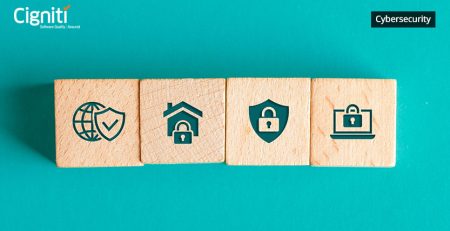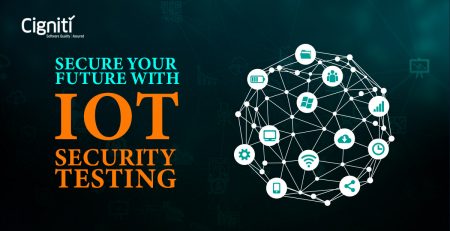Factors to Consider in IOT Security Testing
|
Listen on the go!
|
Internet of Things (IoT) is no more a farfetched dream or an idea. It is a reality that the world is ready to consider and leverage for better results. Its popularity can be attributed to many of its intrinsic features – efficient Machine to Machine (M2M) communication, development of multiple protocols, unification of various enabling technologies/embedded devices, and overall smart working and living.
While we aspire for smart cities, smart environments, smart retail, or smart homes, it becomes absolutely essential for these diverse industries to evaluate the implications of IoT in the LIVE environment.
IoT testing is applicable across any and every domain that is ready to leverage the technology, namely, near field communication (NFC) payments, Marketing, Banking, Automobiles, Telematics, and many more. Particularly, let’s look at the various factors that enterprises/teams should consider while testing security for IoT. To name a few, checking for vulnerabilities, Cyber Attacks, Data Security, Software-Hardware communication, and security of web applications. These are not merely factors to consider, but rather are some of the impending challenges that testers face while testing security in an IoT environment.
Security is one of the biggest issues that enterprises face while implementing IoT solutions. The connected devices need to be controlled, otherwise they could end up jeopardizing the overall functioning and drain sensitive data from the system. At the same time, IoT holds capabilities to bring resourceful insights, which makes the overall process worthwhile. Enterprises that intend to implement IoT solutions take their security implications quite seriously.
Take note of every endpoint added
The expanse of IoT increases with every endpoint added into a network, which adds more vulnerabilities. IoT devices are developed across multiple open source and proprietary operating systems with varying levels of computing power, storage capacity, and network configurations. Hence, it is important that every endpoint added gets recorded as an asset inventory that gets evaluated for its safety and performance. It further makes sense to create an inventory of the devices within the system and keep a track of them. This helps to monitor what’s added and removed from the overall consortium. What works is setting an asset discovery, tracking, and management mechanism towards the inception of an IoT project.
Passwords and Credentials
This could be the most obvious recommendation or a factor to consider in ensuring security with the IoT environment. However, in case of some vendor-supplied default passwords for device configurations, it is kind of tedious and tricky to change. This must be considered right in the beginning of the project, failing which, hackers might attack the system and take control of your device.
Data interfaces
The core of IoT is effective and seamless exchange of data from one point to another. Hence, it is important to comprehend and assess the way various connected devices interact and whether the data exchanged is secure. In case there is a leak in the overall communication, it can result in a breach and cause issues. Moreover, it is important to keep a watch on any unusual activity within the sphere. Any data moving within system can be used against it by hackers. So, it’s better to stay vigilant and monitor thoroughly and continuously.
Constant update
IoT is very much a reality today. This means there is no escaping from the fact that its security and risks related to safety are going to increase and will have to be monitored constantly. One of the biggest problem is that enterprises don’t understand that they need to constantly update their devices. The IoT device that they develop or buy is well updated when it’s new, however, with various changes in the tech environment, they develop vulnerabilities. These vulnerabilities can be identified by hackers who are constantly keeping a watch and waiting for the right opportunity to strike!
Hence, there is a dire need to install an auto update mechanism and keep this factor in constant consideration.
Beware of your IoT device suppliers
Hackers and external predators can definitely be a threat for your IoT systems. But what do you do about the corporations that sell these devices to you. They get access to your personal data, – even data related to your monetary transactions. Moreover, the data gathered via these devices can be used against the users in many ways – at an organizational as well as at an individual level. Consumers of every kind opting for IoT devices must read and understand the agreement while purchasing the device and ensure that the data shared is kept confidential, and that it is shared only after required approvals. Protocols related to data usage and dissemination are crucial in an environment where it forms the basis and the core reason for its existence.
Keep a load-check on the device
As IoT is all about exchange of data across connected device platforms, there are bright chances that there could be occasional spikes in the load of data that gets transmitted. This load might take a toll on the overall performance of the system and result in performance and security issues. These devices need fast moving information and communication systems, so the network and related infrastructure needs to get tested for performance under varying network conditions. Even the IoT devices and applications need to be tested across different configurations to confirm that they respond effectively without any data loss.
In Conclusion
Gartner has stated that the number of IoT devices will grow to more than 20 billion by 2026. We see this becoming a reality. The challenges that will arise as a result can be converted into opportunities by addressing any and every factor that can affect the performance of IoT devices. Security is a major issue that enterprises face while adopting IoT solutions. If these factors are handled and addressed at regular intervals, IoT can be an absolute enabler for growth across diverse domains.
Cigniti’s Security TCoE comprises dedicated teams of security testing specialists with deep expertise spanning multiple domains/industries, cutting-edge technological resources and tools. Connect with us to leverage our robust methodologies, processes, templates, checklists, and guidelines for web applications, software products, networks, and cloud.





Leave a Reply